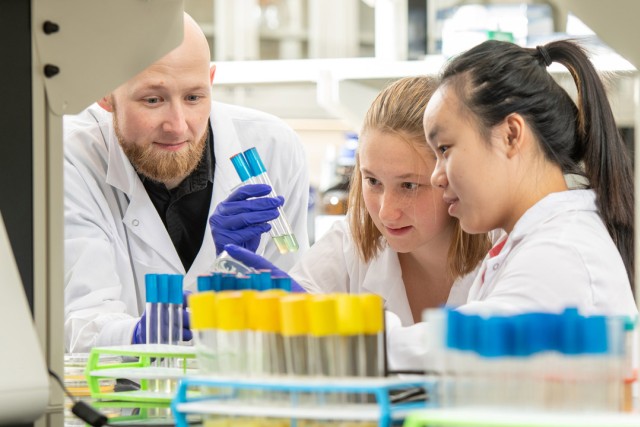RIT and UR professors awarded patent for use of carbon nanotubes for improving delivery of bio-therapies to targeted cells
Technology collaboration could provide safer and less damaging effects of administering agents to cells
M. Golshadi
The image is of cells (false-colored purple) sitting on top of a carbon nanotube, developed by researchers Michael Schrlau and Ian Dickerson, to be used to deliver biomedical therapies for tissue culturing and modification.
Professors from Rochester Institute of Technology and the University of Rochester Medical Center have received a patent to deliver biomolecules into cells through carbon nanotube arrays.
Ian Dickerson, associate professor in the Del Monte Institute for Neuroscience at the University of Rochester, and Michael Schrlau, associate professor of mechanical engineering in RIT’s Kate Gleason College of Engineering, developed the technology that will support inter-cell transfer of bio-therapies to targeted cells.
Dickerson and his team have been developing new technologies to transfer nucleic acids and proteins into cells for enhanced gene editing and an array of cancer therapies. Collaborating with Schrlau for several years, the two researchers successfully combined biomedicine and mechanical engineering techniques to design the device that consists of an array of 200-nanometer carbon nanotubes.
Targeting cells for tissue culturing and modification is a growing field. Use of carbon nanotubes—minute, but strong, tubular devices made up of carbon atoms, or graphene, bonded and capable of conductive properties—are seen as alternatives to current options such as micro-injections, lipofection (an injection methodology) and other techniques. The new technology can ensure safer, less toxic cellular delivery with decreased damage to cells.



